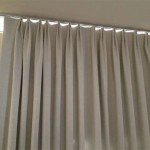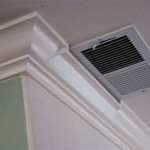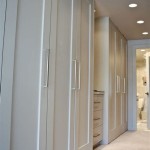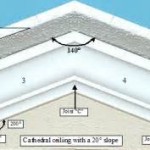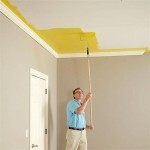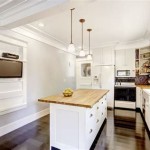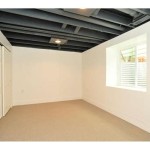Everything You Need To Know About Ceiling Light Fixtures In Bathrooms
Selecting the appropriate ceiling light fixtures for a bathroom involves careful consideration of several factors, including safety, functionality, aesthetics, and energy efficiency. The damp environment of a bathroom demands specific types of fixtures that are resistant to moisture and compliant with electrical codes. Moreover, the lighting design should adequately illuminate the space for various tasks, such as grooming and cleaning, while contributing to the overall ambiance and style of the room.
This article provides a comprehensive guide to understanding the key aspects of choosing and installing ceiling light fixtures in bathrooms. It covers relevant safety standards, suitable fixture types, lighting design principles, and installation considerations, enabling readers to make informed decisions about illuminating this essential space.
Understanding Bathroom Lighting Zones and Safety Ratings
Bathrooms are uniquely challenging environments regarding electrical safety. The presence of water necessitates adherence to specific electrical codes and safety ratings to prevent electrical shock hazards. The International Electrotechnical Commission (IEC) defines zones within a bathroom based on proximity to water sources, and these zones dictate the minimum Ingress Protection (IP) rating required for electrical fixtures.
Zone 0 is the interior of a bath or shower. In this zone, any electrical equipment must be low voltage (12V) and have a minimum IP rating of IP67, meaning it is protected against immersion in water. While ceiling lights are typically not directly in Zone 0, understanding this zone is crucial for comprehensive bathroom safety.
Zone 1 is the area directly above the bath or shower to a height of 2.25 meters from the floor. Fixtures in this zone require a minimum IP rating of IP45, indicating protection against water jets. While ceiling lights might not be directly within Zone 1, the potential for splashing and condensation warrants careful consideration of IP ratings.
Zone 2 extends 0.6 meters horizontally from the perimeter of the bath or shower and to a height of 2.25 meters from the floor. Fixtures in this zone typically require a minimum IP rating of IP44, providing protection against splashing water. Ceiling lights installed close to the shower or bath perimeter should meet this IP rating.
Outside these zones, the requirements are less stringent, but it is still recommended to use fixtures with some degree of moisture resistance, especially in smaller bathrooms where humidity levels can be consistently high. An IP rating of IPX4 or higher is generally advisable for ceiling lights in bathrooms, regardless of the specific zone. The 'X' indicates that there is no protection against solid objects, but the '4' denotes protection against splashing water from any direction.
When selecting ceiling light fixtures, it is imperative to check the manufacturer's specifications and ensure that the fixtures are appropriately rated for use in a bathroom environment. Furthermore, all electrical work should be performed by a qualified electrician to ensure compliance with local electrical codes and safety standards.
Types of Ceiling Light Fixtures Suitable for Bathrooms
Several types of ceiling light fixtures are commonly used in bathrooms, each offering different aesthetic and functional benefits. The selection should be based on the size of the bathroom, the desired level of illumination, and the overall design style.
Recessed lighting, also known as pot lights or can lights, is a popular choice for bathrooms. These fixtures are installed flush with the ceiling, providing a clean, minimalist look. Recessed lights are particularly suitable for small bathrooms or areas with low ceilings. They typically use LED bulbs, which are energy-efficient and provide ample light output. When installing recessed lighting in a bathroom, it is crucial to select fixtures that are IC-rated (Insulation Contact) to prevent overheating and fire hazards if the fixture is in contact with insulation. Moreover, the fixtures should be specifically designed for wet locations and have an appropriate IP rating.
Flush mount ceiling lights are mounted directly against the ceiling surface. These fixtures offer a wider variety of design styles and can accommodate different bulb types, including incandescent, halogen, and LED. Flush mount lights are a versatile option for bathrooms of various sizes and styles. Look for models specifically designed for bathroom use, with sealed lenses or enclosures to protect against moisture. Also consider the material of the fixture, ensuring it is resistant to corrosion or rust in the humid bathroom environment.
Semi-flush mount ceiling lights are similar to flush mount fixtures but extend slightly from the ceiling. This design creates more visual interest and allows for more decorative elements. Semi-flush mount lights are suitable for bathrooms with slightly higher ceilings where the added dimension will not make the space feel cramped. As with flush mount fixtures, choose models designed for damp locations and made from moisture-resistant materials.
Chandeliers and pendant lights can add a touch of elegance and sophistication to a bathroom, especially in larger bathrooms with high ceilings. However, careful consideration must be given to the placement of these fixtures to ensure they are not within the hazardous zones near water sources. It is critical to choose chandeliers and pendants with appropriate IP ratings and to ensure that they are installed at a safe distance from the bath or shower. Also consider the scale of the fixture in relation to the size of the bathroom to avoid overwhelming the space.
Track lighting offers a flexible solution for illuminating specific areas of the bathroom, such as the vanity or shower. Track lighting systems consist of a track mounted to the ceiling with multiple adjustable light heads. This allows for directing light precisely where it is needed. Track lighting is particularly useful in bathrooms with unique architectural features or in areas where task lighting is essential. Choose track lighting systems that are designed for damp locations and that use LED bulbs for energy efficiency and longevity.
Lighting Design Considerations for Bathroom Ceiling Fixtures
Effective bathroom lighting involves creating a layered approach that combines ambient, task, and accent lighting. Ambient lighting provides overall illumination, task lighting focuses on specific areas for functional purposes, and accent lighting highlights architectural features or décor elements.
Ambient lighting, typically provided by ceiling fixtures, should create a comfortable and inviting atmosphere. Recessed lighting, flush mount lights, or semi-flush mount lights can be used to provide a general level of illumination throughout the bathroom. The amount of ambient light needed will depend on the size of the bathroom and the color scheme. Lighter colors reflect more light, while darker colors absorb light, requiring more illumination. Aim for a uniform distribution of light to avoid harsh shadows or dark spots.
Task lighting is essential for areas where specific tasks are performed, such as the vanity. Vanity lighting should provide bright, even illumination for activities like shaving, applying makeup, and grooming. Sconces mounted on either side of the mirror are a popular choice for vanity lighting, but if ceiling fixtures are used for task lighting, consider using adjustable track lighting or recessed lights that can be angled to direct light onto the vanity area. Avoid placing a single light source directly above the mirror, as this can create unflattering shadows.
Accent lighting can be used to highlight architectural features, such as a textured wall or a decorative tile pattern. Small recessed lights or track lighting can be used to create subtle highlights and add visual interest to the bathroom. Accent lighting can also be used to illuminate artwork or decorative objects.
The color temperature of the light is another important consideration. Color temperature is measured in Kelvin (K) and indicates the warmth or coolness of the light. Warm light (2700K-3000K) has a yellowish hue and creates a cozy, relaxing atmosphere. Cool light (4000K-5000K) has a bluish hue and provides a more energetic and focused light. For bathrooms, a color temperature of around 3000K-4000K is generally recommended, as it provides a balance between warmth and brightness. Also, consider the Color Rendering Index (CRI) of the light source. A higher CRI indicates that the light source accurately renders colors, which is particularly important for tasks like applying makeup.
Dimmers can be added to ceiling light fixtures to provide greater control over the lighting levels and create different moods. Dimmers are particularly useful in bathrooms, where you may want brighter light for tasks like cleaning and softer light for relaxation. When selecting dimmers, ensure they are compatible with the type of lighting being used, such as LED or incandescent.
Finally, consider the overall style of the bathroom when selecting ceiling light fixtures. The fixtures should complement the other design elements in the room, such as the vanity, fixtures, and tiles. Whether the bathroom has a modern, traditional, or contemporary style, there are ceiling light fixtures to match. Coordinating the style of the lighting with the overall design theme will enhance the aesthetic appeal of the bathroom.

Bathroom Light Fixtures Guide Lights Com

The 16 Best Bathroom Ceiling Lighting Ideas Lightopia

Bathroom Ceiling Lights The Perfect Way To Illuminate Your

Choosing The Perfect Bathroom Ceiling Light Fixtures

The Best Types Of Bathroom Lighting Light Fixtures Modernize

Bathroom Light Fixtures Guide The Family Handyman

Bathroom Lighting Ideas To Complement Any Design

Bathroom Ceiling Lights And Chandeliers Emma Courtney Home

10 Illuminating Bathroom Lighting Ideas To Brighten Up Your Space Architectural Digest
:strip_icc()/interiorimpressions-8ecc8a8dabce439793493e9c5696ab56.png?strip=all)
20 Bathroom Lighting Ideas To Make You Look Your Best
Related Posts

